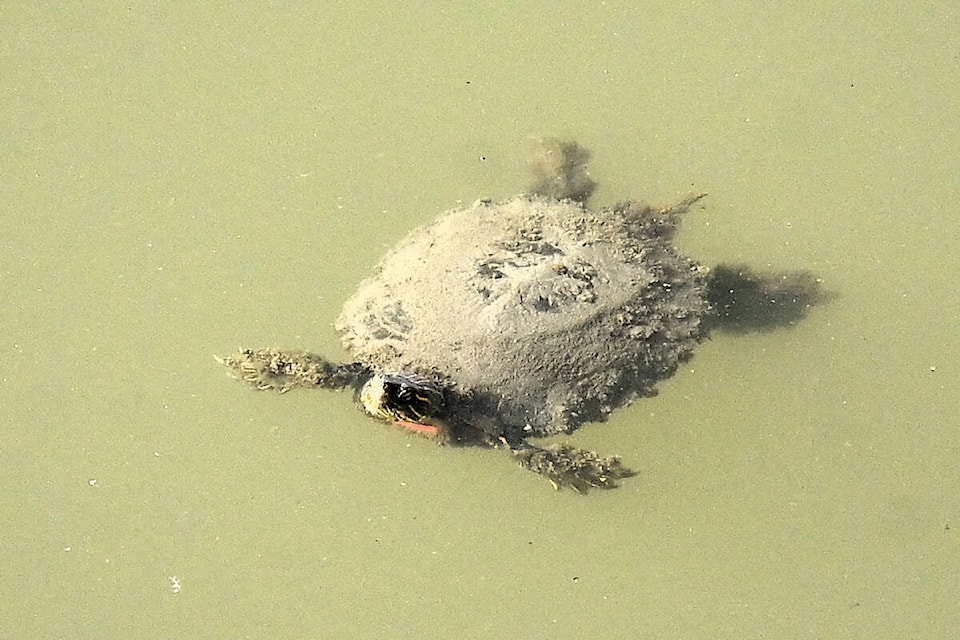Over the past few days, turtle-watching at the Salmon Arm wharf has been in full swing.
Numerous wharf visitors have been peering over the railings to watch Western Painted Turtles take what may be their first breath of air since last November.
With shells plastered in mud, these winter survivors appear battle-fatigued and badly in need of a shell-wash!
With the advantage of looking down from above, you can see some of the turtles walking or swimming under the surface making it seem like part of the lake bottom has sprouted legs, head and tail.
On a “recent turtle-watching-walk” (March 18), our family counted a minimum of 16 turtles from the wharf deck.
Usually a hot-spot for bird-watchers, the wharf had become a turtle-viewing platform for many enjoying a wonderful dose of springtime, sunshine, birds and turtles.
Sporting binoculars around my neck and wearing a “BC Birding Trail” ballcap, several people asked me about the turtles (and the birds…).
Their chief question was how do these Wester Painted Turtles live underwater without air for an entire winter? Do they have gills?
How they survive is a tremendous question that has been pondered by a number of scientists. Western Painted Turtles, in particular, have been much-studied because they represent the extreme of this ability – surviving up to four months beneath the ice without being able to breathe normally.
One key to this amazing ability is that the mud under the ice doesn’t freeze. It stays constant at about 4 C (the temperature when liquid water has its maximum density).
Since turtles can’t regulate their body temperature through internal heating, their metabolism slows down drastically as they cool thus reducing their need for oxygen.
Add to this how they have the ability to absorb some oxygen directly from lake water through their skin and the linings of their mouth and excretion vent.
However, ice cover reduces oxygen uptake in the lake making this an unreliable oxygen source, especially after a long winter.
Despite declining oxygen levels in water, the turtle still needs to burn some of its body sugars to stay alive on the bottom of the lake. They can do this through anaerobic respiration that allows energy release in the absence of oxygen.
The downside is that anaerobic respiration produces lactic acid that could reach toxic levels. Amazingly, our western painted turtles have another adaptation – the ability to safely store this toxin in their shells and bones.
The shell and bones also release calcium that buffers the toxicity.
Walking back to the parking lot, we diverted around “turtle pond” in front of the hotel. As expected, there we got a more traditional view of turtles hauled out on the single shoreline log.
Basking in the sun, the six turtles were warming themselves up for the next phase of their amazing year, the breeding season.
I find these adaptations breath-taking in their elegance and feel fortunate how the wharf and foreshore trails gives us a grandstand view of these wonders of nature.



